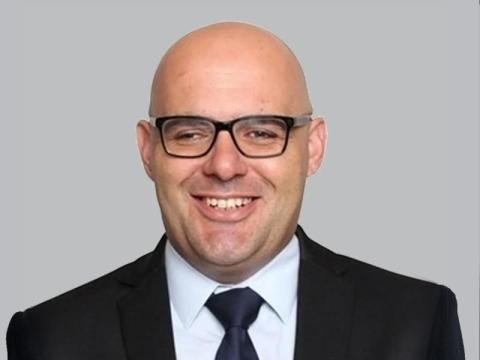Australia is heading for another Federal election with promises from both major parties that are high on sugar hits and low on long-term strategies.
While some policies offer relief amid increasing cost-of-living pressures, they do not address underlying issues, highlighting a disappointing lack of foresight from the Coalition and Labor.
Both parties have pledged billions in populist measures rather than the wholesale reform required to set Australia up for the future.
Housing and health measures have dominated the pitch to voters – and hogged the headlines – in the lead-up to the May 3 poll, while energy remains a political football. The goals keep shifting, with the major parties sticking to traditional stances at a time when energy security has never been more important.
Other sectors critical to the country’s wellbeing, such as agribusiness and defence, have barely made an appearance on the campaign trail, though the Coalition made a late defence play. Opposition Leader Peter Dutton has promised to spend an additional $21 billion on the military over the next five years, taking the total to 2.5% of GDP, and planning for 3% within a decade.
While strengthening Australia’s defence capabilities is crucial at a time of increasing regional tension, the volatility of markets should also have elevated agribusiness, particularly food security, to the top of the political agenda. The sector requires more strategic focus to address challenges such as climate change and supply chain disruptions.
Labour, or the lack thereof, is also a critical issue. The Albanese Government has allocated $1.5 billion in funding for at least 100,000 fee-free TAFE places from 2027, while the Coalition – critical of the TAFE system – has promised an alternative $260-million investment to establish technical schools. Labor also made a late pitch to boost the housing workforce, announcing a new Advanced Entry Trades Training Program to fast-track qualifications for 6000 tradies.
Devika Shivadekar

“While promises are being thrown around like confetti, RSM Economist Devika Shivadekar says neither party has offered a plan to address what is structurally wrong with an economy so reliant on trade and services.
Nor do we have the migration policies in place to help combat critical shortages in construction, healthcare and other key areas of the economy.
The ongoing global volatility, influenced by Trumponomics, adds to the uncertainty, which is reflected in the forecast budget deficits and the Reserve Bank of Australia's cautious approach to interest rates.
At a time when Australia needs bold leadership and strong direction, RSM partners from key sectors are struggling to find either. Whether viewed from the macro level, or drilled down into specific areas, the election pitches do not inspire a great deal of confidence going forward.
Party pledges sit atop structural challenges that will shape the nation’s prosperity for decades to come. The real test for Australia, argues Shivadekar, lies not in the generosity of either party’s promises, but in their capacity to address the underlying issues that persistently challenge Australia’s social and economic fabric.
Cutting migration, such as the Coalition plan to slash skilled visas by 45,000 in 2025-2026, is a blunt tool that misses the mark. With an ageing population, migration is key to keeping the economic engine running. It is a pillar of growth, addresses labour shortages and supports the education sector. Aligning skilled migration with genuine needs, streamlining residency pathways, and integrating policy with housing and infrastructure planning will help ensure long-term benefits.
Climate policy presents a challenge and an opportunity. Investment in renewable energy and emissions reduction is essential to meet international commitments and ensure energy security. However, this requires a clear and credible transition plan – one that supports industry, attracts private investment and protects vulnerable communities.
A high level comparison for each policy area and its cost to the national exchequer is summarised below:
All these ambitions come with significant fiscal implications. Major commitments must be weighed against the realities of a national debt projected to exceed one trillion dollars.
Sustainable budgeting will require a willingness to look at comprehensive tax reform, including broadening the tax base and phasing out inefficient subsidies, as well as ensuring that new spending is matched by long-term savings and investments that deliver intergenerational benefits.
For those who see subsidies as the solution, Shivadekar points out that the costs of today’s promises will ultimately be carried by future generations.
![]()
Source: Australian Department of Treasury, Macrobond, RSM Australia
Australia has the opportunity to move beyond short-term fixes and electoral cycles, and to embrace a vision for long-term balance and prosperity. This means prioritising evidence-based reforms in tax, housing, productivity, climate, and migration – reforms that are grounded in the realities of a changing world and the aspirations of a diverse and dynamic society.
Fresh from meeting energy leaders ahead of a conference in Western Australia, Mining Energy and Resources Lead Craig Amos said their message was clear – and ominous.
“The common theme was that both political parties have energy dramatically wrong in terms of what we're looking to do and (their inaction) borderlines on crisis in a few years,” Amos says.
While Labor continues to pursue its ambition to power 82% of the grid with renewables by 2030, the Coalition is trying to convince voters of the merits of a nuclear future, promising to build seven nuclear power plants in regional Australia.
But the focus needs to be much broader.
Craig Amos

“We need to be looking at all sources of energy when it comes to energy transition,” Amos says. “We need to be considering scientifically and analytically every source in terms of energy mix.
Labor’s promised $150 rebate on power bills may provide some relief for household budgets but it does nothing to relieve pressure on the grid.
“Our energy storage solution is largely focused on lithium-ion batteries and in a geopolitical scenario where some 70% of those come from China, there could be all sorts of problems.”
Neither party is delivering longer-term solutions. "We’ve had a significant net outflow of capital into renewable energy at a time when energy security should be at the top of sovereign agendas,” Amos says. “There’s a bifurcation in the market between where capital is flowing in terms of energy and energy demand.”
The election cycle talks to energy affordability, which has decreased in the wake of successive policy failures. The discussion should instead be focused on energy security: Is our generation stable? Can we transmit it where it needs to be? Will Victoria have enough gas to transition?
“We need to solve the energy security problems to have a sustainable solution to energy affordability,” Amos says.
That means consulting broadly with industry – non-government bodies employing people with PhDs and others who have a strong understanding of the sector and what is needed to deliver stability well into the future. “At the moment, the government agency is telling the government what the government wants to hear.”
There is not a lot to split the two major parties on the health front, either, with leaders opting for Band-Aids rather than much-needed surgery to relieve an overburdened system.
RSM Health Lead Jayesh Kapitan says the initiatives on the table are once again aimed at voters, rather than the sector.
As part of an $8.5 billion investment in Medicare, the Albanese Government has promised to deliver another 18 million bulk-billed visits to the GP by 2030. The Coalition has promised to match that investment, as well as providing millions in financial incentives to encourage junior doctors into general practice.
The devil is in the yet-to-be-seen detail, however, with both Kapitan and Peter Nicol, RSM Partner Medical Services, questioning how the funds will be distributed.
“They’re trying to entice voters with bulk bulking but it’s not necessarily going to translate to an appointment if the doctors or clinic operators are not going to be funded appropriately,” Kapitan says.
The $8 billion would be better spent on setting up infrastructure to improve the system, rather than on rebates.
"They are promising that nine out of 10 consultations in the future will be bulk-billed and I can’t see that happening if the GP clinics can’t survive.”
A holistic approach is the only way to heal the health sector. “A piecemeal solution is not going to work. If people can’t get into their GP, they end up in hospitals,” Kapitan points out. “If they decide it’s too expensive to go to the GP, they’ll just go to the emergency department. You have to look at how all the pieces connect to each other to ensure you get good outcomes.”
And while both parties have promised to invest millions in improving women’s health and mental health services, including Labor’s $500 million pledge for Youth Specialist Care Centres, there are real questions about how programs will be delivered.
Jayesh Kapitan

“Do they actually have the talent and the workforce to support these initiatives? Do we have the people to deliver the services,” asks Kapitan.
“Health does not work in a four-year election cycle; it needs to be thought through from birth to death.”
Housing has been hot property for all parties this election campaign, with affordability and availability at the top of the agenda.
The Albanese Government has promised $10 billion to build 100,000 homes for first home buyers, as well as exempting them from mortgage insurance. The Coalition will make the interest on their new home tax deductible for five years, as well as give first homebuyers access to up to $50,000 from their superannuation for their first home.
Adam Crowley, Real Estate and Construction Lead, is unimpressed with either offering. “They are all just sugar hits that will push up prices without addressing the core issue – supply,” he says.
Adam Crowley

“While acknowledging the difficult juggling act of opening the market to first home buyers without negatively affecting existing homeowners, Crowley says the policies are little more than short-term political grabs.
“Both of them are inflationary, both of them are just going to drive demand, which will continue to outstrip supply,” he says.
"And how are these houses even going to get built when investment in infrastructure is soaking up an already stretched labour pool. What’s good for one sector may come at the expense of another. Money needs to be spent attracting people into construction, whether through TAFE or other apprenticeships."![]()
The biggest roadblock to housing supply, however, is a broken planning and approvals process. “A lot more could be done to incentivise local and state governments to address planning reform and approval processes and really try to speed that along – it's a fundamental hurdle to addressing the supply issue,” Crowley argues.
Rather than offer interest-rate tax deductions to first homebuyers, policy makers should have turned their attention to reforming the way GST is applied in build-to-rent projects, which would also help address supply.
"When you build an asset and derive residential rent, none of the GST costs on your acquisition and building can be claimed, which means you’re 10% worse off before you get out of the gate,” Crowley says.
Labor’s pledge to allow Australians to buy their first home with a 5% deposit is also wrong-headed. “If the government put guarantees in place to help the private sector with funding arrangements to get new projects built, this would help unlock the supply side,” Crowley says.
Instead, they are handing out sugar hits to encourage more people into a property market where homes are in short supply. “Both parties are coming at this from a vote-winning perspective; it’s not fundamental reform to the sector.”
While both parties have flagged substantial support for the manufacturing sector, the Coalition’s focus on direct tax incentives and grants for machinery have the edge.
Manufacturing Lead Louis Quintal believes targeted financial support would enable manufacturers to upgrade equipment, as well as drive efficiency and innovation.
While Labor has pledged to support high-tech manufacturing, including robotics and automation, by funding new facilities and infrastructure, the Coalition's commitment to infrastructure development would significantly enhance manufacturing prospects. 
“By investing in roads, public transport, and regional development, they are laying the groundwork for an improved supply chain and better workforce mobility,” Quintal says.
The National Reconstruction Fund, Labor’s $15 billion pitch to revitalise manufacturing at the last election, has come under fire for its slow start and delivery, with the Coalition poised to re-allocate the remaining funds.
The need to remain competitive in an increasingly unsettled global market also makes Labor’s proposal to raise the minimum wage unappealing. It will have a direct impact on the cost of doing business, putting Australia at significant disadvantage with competitors in the APAC region.
Another solution would be to provide tax cuts to offset rising labour costs, so that manufacturers can be competitive while maintaining employee satisfaction and productivity.
With its reliance on energy, the manufacturing sector is also invested in keeping the cost of energy down while maintaining supply. Labor’s focus on renewables and the Coalition's plan to support nuclear and gas power mean there is no clear winner.
Louis Quintal

“Renewables and gas are likely to provide the quickest cost reduction in energy for manufacturing, so a combination of policies would yield the best results in the short term,” Quintal says.
If we are to reduce our dependency on others, Australia needs a strong manufacturing sector.
“There is no solid framework in place to say how they're going to upskill people to make the manufacturing sector more productive because we just don't have that technological know how, which is very strong in countries like China and India,” says Shivadekar.
The impetus to upskill our workforce appears to be missing.
Australia may have been built on the sheep’s back, but it’s easy for those in the regions to believe Canberra has long since forgotten about them, or their needs.
They certainly haven’t received a lot of love this election campaign, although Agribusiness Lead Ross Paterson says the Coalition’s promise to halve the fuel excise for a year will provide some relief.
“If you're going to have cost-of-living measures, you don't want them to be locked in for future budgets, so the fact it’s only for 12 months is probably a good thing,” he says. “But it is just a Band-Aid solution and unfortunately both parties are just populist parties. To be blunt, they are not looking outside the metro areas.”
This includes incentivising people to live and work in regional towns and communities. Housing supply is one issue but it’s also about building a sustainable regional workforce. “This all needs to happen on a broad scale but there’s nothing much from either party.”![]()
While renewable energy projects are generating interest, the worry is they are often at the expense of landowners. As corridors are created for transmission lines, farmers compensated for the lost land are losing half of it to capital gains tax.
There is also considerable concern in the sector about the influence the Greens might have in the next government.
Ross Paterson

“If the Coalition does not get in or Labor doesn’t get in its own right, there could be quite significant changes in terms of tax that will affect the agri sector and probably mining as well,” Paterson says. “They have been talking about targeting inheritance taxes, for example, which could disproportionately affect the agri sector.”
Then there is the live cattle trade, which has been in the crosshairs – and the subject of ongoing court action – since the Gillard Government's 2011 ban was ruled invalid.
“Beef is one of our largest exports, so to suddenly have that go the same way as the live sheep trade is quite scary,” Paterson says.
The Coalition has promised to overturn the live sheep ban should it win government and predicted an end to the live export industry if Labor forms Government with the Greens.
While Paterson says Labor may have been prepared to wear the electoral hit of the more localised live sheep market, the live cattle trade affects the greater part of Queensland, as well as other parts of Australia, making it a harder road to hoe. Nonetheless, farmers are nervous about what lies ahead.
Whatever the outcome of the election on May 3, Australia appears bereft of leadership that looks beyond the four-year election cycle.
While a few extra dollars are undoubtedly welcome in any household, rebates and tax breaks for voters do not secure a country’s economy, nor its future.
Until politicians are prepared to put their jobs on the line in pursuit of plans that protect and prepare the nation for decades ahead, rather than just until the next election, Australia will continue to be sold short.
The party that takes power for the next four years needs to demonstrate a more visionary and strategic approach to addressing long-term challenges. The shakeup of the world order under Trump has highlighted that this is more critical than ever.







